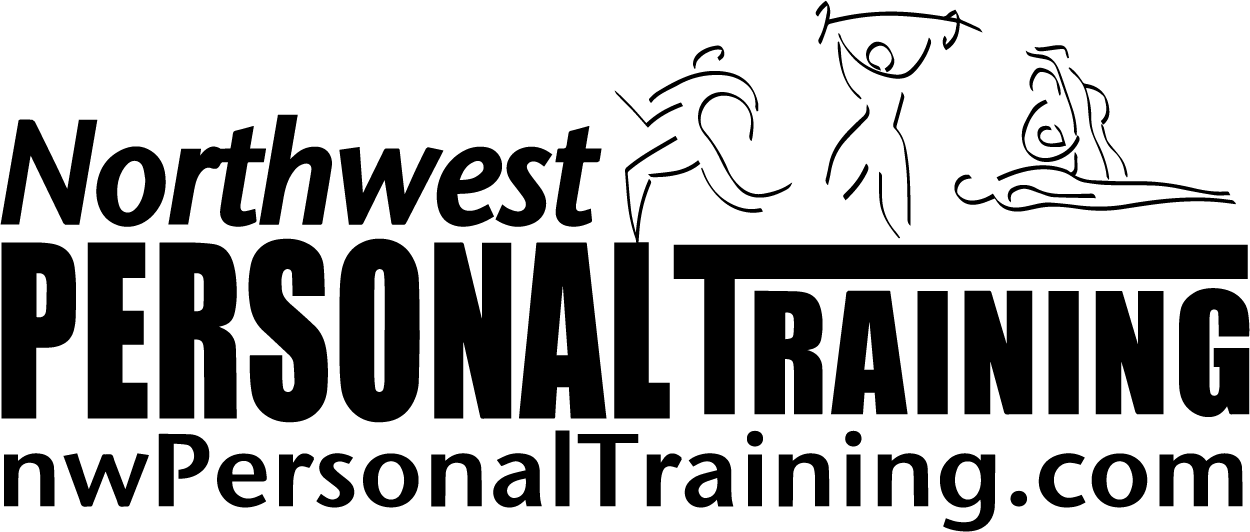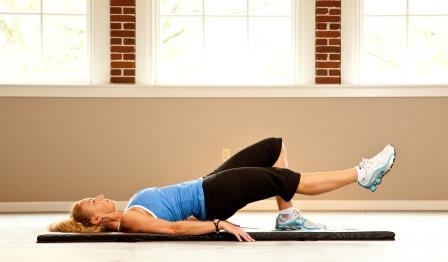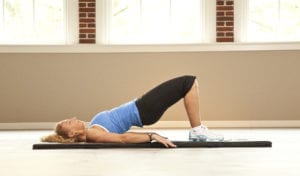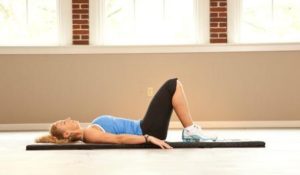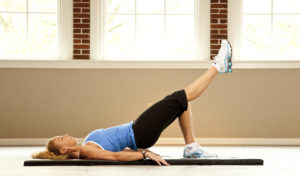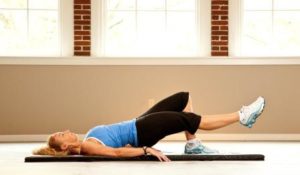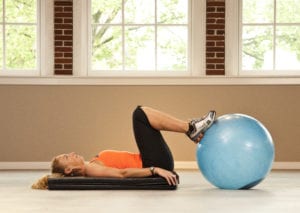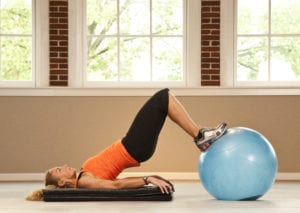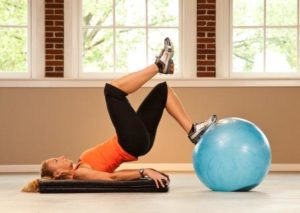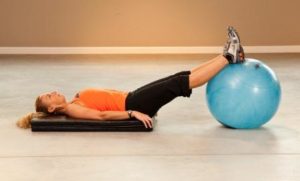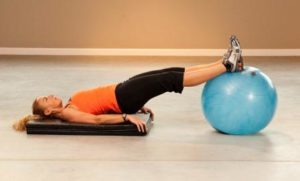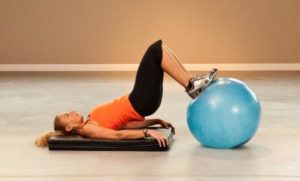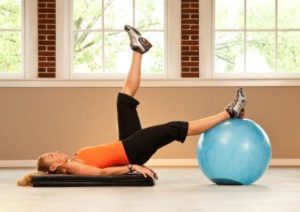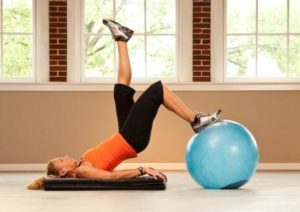The strength of your hips is critical to stabilize your pelvis while walking, running or playing sports. If your hips aren’t strong, your knees and back will suffer. Bridging is an exercise often used by physical therapists to help strengthen hips and it can be done anywhere with no equipment.
There are several progressions and variations to the Bridge exercise and mixing it up will add variety and train your hips in many different angles and motions.
Here’s some tips to performing a variety of different bridging exercises. Perform these exercises 2-3 days per week on alternating days.
Basic Bridge
A basic bridge begins by lying on your back with your knees bent and feet flat on the floor.
Tighten your abdominal and buttock muscles and slowly lift your hips off the floor.
Roll up until your hips are high in a comfortable position and your body weight is resting on your shoulder blades.
Keep your hips square to the ceiling.
Try to avoid letting your pelvis tilt or rotate.
Hold this position for a few seconds and then slowly release down while maintaining the muscle activation in your hamstrings and glutes. Perform 10-20 reps.
Add Load
You can increase the intensity by adding external resistance. Try holding a weight or barbell on your hips so as you thrust your hips upwards, you have more weight to lift.
Adjust Speed
As a simple variation to this exercise, adjust the speed of the movement. Try 5 counts up, 5 counts down. Try 1 count up, 5 counts down. Try 1 count up, 1 count day. Adjusting the speed of movement will stimulate the muscles differently.
Add Adduction/Abduction
Another simple variation is to hold the bridge in the high position and allow the knees to move in and out laterally within a comfortable range of motion.
Add Hip Tilts
Another simple variation is to start with the bridge in the high position and then allow one hip to drop/tilt down while the other lifts high. Tilt side to side.
Progress to 1 Leg Bridging
A more advanced option is 1 Leg Bridging.
Lay on your back with 1 leg bent, foot on the floor and the other leg lifted straight up to the ceiling.
With your arms at your side, slowly lift your hips and buttocks up towards the ceiling while contracting your glutes (buttocks) and hamstrings (back of thigh) until your body weight is resting comfortably on your shoulder blades.
Throughout the entire exercise, be sure to keep your hips square to the ceiling and your abdominals contracted. Be sure not to tilt to one side while doing these 1-leg lifts. You can start by alternating legs and then progress to performing a set on one leg only and then repeating on the other side.
You can also adjust intensity by modifying the position of the leg in the air from bent to straight up towards the sky to straight and extended out away from the body and towards the floor.
Add a Ball
Once your hips become strong, another more advanced progression is to use a stability ball.
Place your feet on the stability ball and then perform the bridge for an intense recruitment of your hips and hamstring muscles.
There are many variations of this exercise from two legs to one leg, straight legs, bent legs and holding the bridge while you curl the legs in and out.
Yours in health & fitness,
Sherri McMillan
